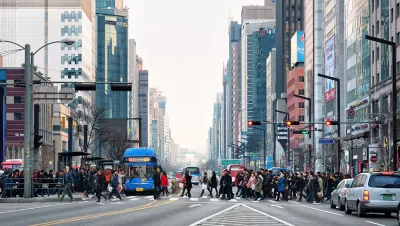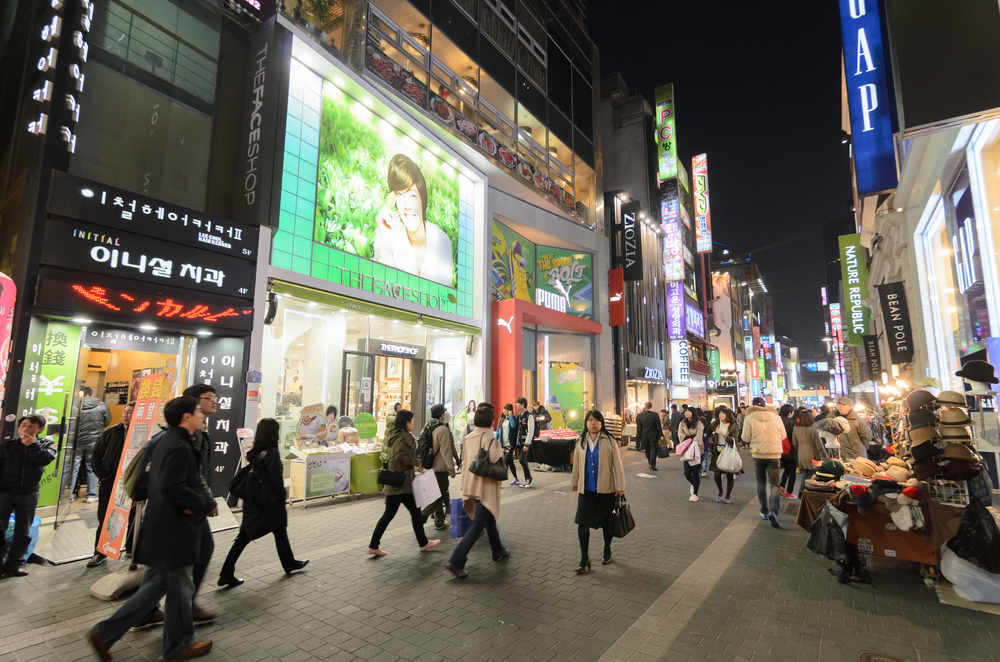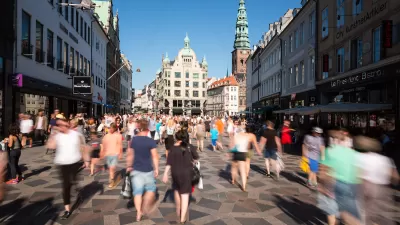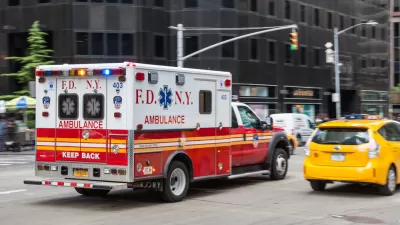A new article in the Journal of Planning Education and Research tests whether Jacob’s ideas ring true for predicting pedestrian vitality in Seoul.

Jane Jacobs may have written The Life and Death of Great American Cities, thinking of places in the United States like Greenwich Village in Manhattan, the Old North End in Boston, and the "shoe district" in Louisville, but her theories are now influential worldwide. What resonates is the universality of how the built environment contributes to pedestrian vitality. In particular, Jacobs highlighted the importance of diversity in terms of streets, buildings, and people, while offering guidance for good planning in the form of "mixed land uses, small blocks, buildings from many different eras, and sufficient building densities," which allow for vibrant activity throughout the day (Sung et al 2015).
Seoul, South Korea, is characterized by high levels of mixed land uses; its densities are higher than New York City and its transportation network is well developed, but the city is also under constant pressure from centralized redevelopment projects and traffic. A new article in the Journal of Planning Education and Research tests whether Jacob's ideas ring true for predicting pedestrian vitality in Seoul.

Hyungun Sung, Sugie Lee, and SangHyun Cheon test Jacob’s ideas by comparing the volume and composition of pedestrian and automobile trips in Seoul at different times of the day. The authors used Korean neighborhood units ("dongs"), which are approximately the same size as Jacob's ideal urban district. They developed several measures of land use mix and included other characteristics of the neighborhoods, such as the age of buildings, density, block size, and border vacuums (e.g., large obstacles, like highways or superblocks, which interrupt the street grid) in their analysis.
They found that short blocks, arranged in networks with four way intersections, promote pedestrian uses, and border vacuums harm the pedestrian environment. To test Jacob's hypothesis that vibrant districts also have activity through the day, the authors evaluated how various neighborhood characteristics contributed to having sustained pedestrian activity at different times. The evidence for this was mixed, as many areas within Seoul are 24-hour districts.

This paper largely confirms Jacob's theory of urban vitality as related to environments that promote pedestrian oriented communities. These results are consistent with the 5-Ds described by Robert Cervero (Density, Diversity, Design, Destination, and Distance to Transit), and confirmed in other empirical research of developments based on these principles, such as LEED-ND (Ewing et al 2013). That is to say that people in Korea respond to the built environment much in the same way as people in the United States.
Seoul or New York are certainly not examples for every community, but these results may also remind planners that fixtures of American development practices and regulation, such as, single-use zoning, superblocks linked by arterials, street design, and subdivision ordinances that discourage connectivity and suppress density may be insurmountable barriers to vibrant street life.
The authors of the paper are, respectively, from Chungbuk University, Cheongju, Korea, Hanyang University, Seoul, Korea, and HongIk University, Seoul, Korea.

Study: Maui’s Plan to Convert Vacation Rentals to Long-Term Housing Could Cause Nearly $1 Billion Economic Loss
The plan would reduce visitor accommodation by 25,% resulting in 1,900 jobs lost.

North Texas Transit Leaders Tout Benefits of TOD for Growing Region
At a summit focused on transit-oriented development, policymakers discussed how North Texas’ expanded light rail system can serve as a tool for economic growth.

Why Should We Subsidize Public Transportation?
Many public transit agencies face financial stress due to rising costs, declining fare revenue, and declining subsidies. Transit advocates must provide a strong business case for increasing public transit funding.

How to Make US Trains Faster
Changes to boarding platforms and a switch to electric trains could improve U.S. passenger rail service without the added cost of high-speed rail.

Columbia’s Revitalized ‘Loop’ Is a Hub for Local Entrepreneurs
A focus on small businesses is helping a commercial corridor in Columbia, Missouri thrive.

Invasive Insect Threatens Minnesota’s Ash Forests
The Emerald Ash Borer is a rapidly spreading invasive pest threatening Minnesota’s ash trees, and homeowners are encouraged to plant diverse replacement species, avoid moving ash firewood, and monitor for signs of infestation.
Urban Design for Planners 1: Software Tools
This six-course series explores essential urban design concepts using open source software and equips planners with the tools they need to participate fully in the urban design process.
Planning for Universal Design
Learn the tools for implementing Universal Design in planning regulations.
City of Santa Clarita
Ascent Environmental
Institute for Housing and Urban Development Studies (IHS)
City of Grandview
Harvard GSD Executive Education
Toledo-Lucas County Plan Commissions
Salt Lake City
NYU Wagner Graduate School of Public Service
































